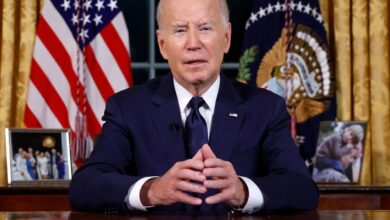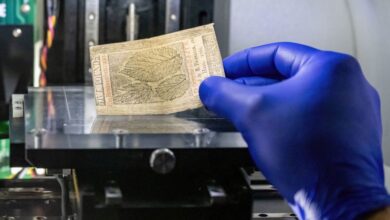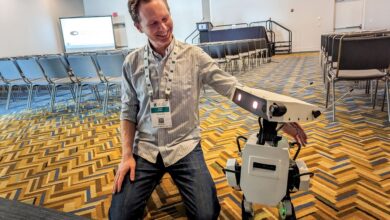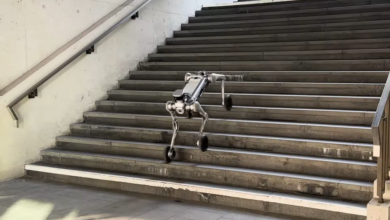High Schooler Brings IEEE Mobile Disaster-Relief Tech to Campus
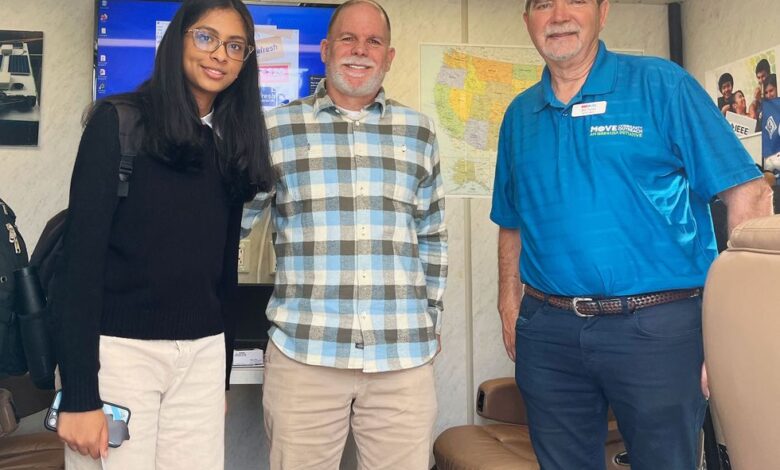
Unlike most people who encounter the IEEE-USA MOVE (Mobile Outreach VEhicle) emergency relief truck, Ananya Yanduru wasn’t a survivor of a natural disaster who needed to charge her cellphone or access the Internet. Instead, the 16-year-old got a guided tour of the truck on the grounds of her high school. She had requested MOVE visit Canyon Crest Academy, in San Diego, so she and her classmates could learn about the technology it houses.
The vehicle is equipped with satellite Internet access and IP phone service. MOVE can charge up to 100 cellphones simultaneously. It also has a mobile television for tracking storms, as well as radios for communications. A generator and three solar panels on the roof power the technology.
When it’s not deployed to help in disaster recovery, the vehicle stops at venues so its team can provide guided tours, educating people about ways technology helps during disasters.
Yanduru spotted the truck in June 2023 when it was parked at the San Diego Convention Center. She was there to accompany her father, an IEEE senior member, to a conference.
“I saw that the truck had traveled across the United States to help with hurricanes, be there for disaster relief, and work with the American Red Cross,” she says. “I thought that was a big deal.” MOVE’s volunteers often coordinate their disaster-relief efforts with the Red Cross.
Tours were over for the day, but that didn’t stop her. She was so determined to explore the vehicle that as soon as she got home she went to the MOVE website and requested a visit to her school. It showed up a few weeks later.
Yanduru was most interested in its communications system. She was impressed that the vehicle had its own Wi-Fi network, she says.
“I really liked how the IEEE-USA MOVE truck is able to establish such a strong communication system in a disaster area,” she says. “The radio engineering communication part really clicked with me.”
The vehicle was a big hit at her school, Yanduru says. More than 70 students and teachers toured it. Some of the students brought their family and friends.
Qualcomm’s devices inspired an interest in engineering
Yanduru is no stranger to engineering or technology. She comes from a family of engineers and is a member of her school’s radio engineering, coding, and 3D printing clubs.
Her father, electrical engineer Naveen Yanduru, is vice president and general manager of Renesas Electronics, in San Diego. Her mother, electrical engineer Arunasree Parsi, has worked as a computer-aided design engineer for Qualcomm and other semiconductor companies. Parsi is now president and CEO of Kaleidochip, also in San Diego.
“I really liked how the IEEE-USA MOVE truck is able to establish such a strong communication system in a disaster area.”
Yanduru says her mother sparked her passion for technology. When the girl was a youngster, the two visited the Qualcomm Museum, which displays the company’s modems, chips, tracking systems, and other products.
“I got interested in engineering from looking at those devices and seeing how engineering could be applied to so many different aspects of the world and used in so many fields,” she says.
Her parents support her interest in engineering because “it’s something that we can talk about,” she says. “I always feel open to discussing technology with them because they have so much knowledge in the field.”
Students and teachers from San Diego’s Canyon Crest Academy line up to tour the IEEE-USA MOVE truck during its stop at the high school.Ananya Yanduru
Participating in ham radio, 3D printing, and coding clubs
It’s no surprise Yanduru was interested in the MOVE’s communication system. She is a cofounder and copresident of her school’s radio engineering club, which has 10 members. It teaches students about topics they need to know to pass the amateur radio licensing test.
Yanduru is a licensed amateur radio operator. Her call sign is K06BAM.
“Getting a license sounds cool to a lot of high school students,” she says, “so as the founders, we thought the club would get more interest if we showed them an easy way to get their ham radio license.”
Now that most members have a license, they decided to participate in other activities. They first chose NASA’s Radio JOVE. The citizen science project provides kits for building a simple radio telescope to conduct scientific analysis of planets, the Milky Way, and Earth-based radio emissions. The findings are then shared with radio observatories via the Internet.
The club’s students plan to build their telescope during summer break, Yanduru says, adding that in the next school year they’ll conduct experiments about energy coming from Jupiter, then will send their results to NASA for analysis.
Yanduru also helped establish the school’s 3D printing club. She teaches club members how to print. The six members also help teachers repair the printers.
Another hobby of hers is writing code. She is secretary of the academy’s Girls Who Code club, which has about 20 members, not including the classmates they teach. The program aims to increase the number of women in the tech field by teaching coding.
She is sharing the knowledge she gains from the club as a volunteer teaching assistant for the League of Amazing Programmers. The San Diego–based nonprofit after-school program trains students in grades 5 to 12 on Java and Python.
“I really like being part of all the clubs,” she says, “because they use different aspects of engineering. For 3D, you really get to see the creative and the physical aspects. Radio is obviously more abstract. And coding is fun.”
Yanduru is still a few years away from attending college, but she says she plans to pursue an engineering degree. Choosing which field is a dilemma, she says.
“There’s a lot of things in electrical engineering and computer engineering that I find interesting,” she says. “I’ll definitely be studying something in one of those fields.”
IEEE Spectrum
